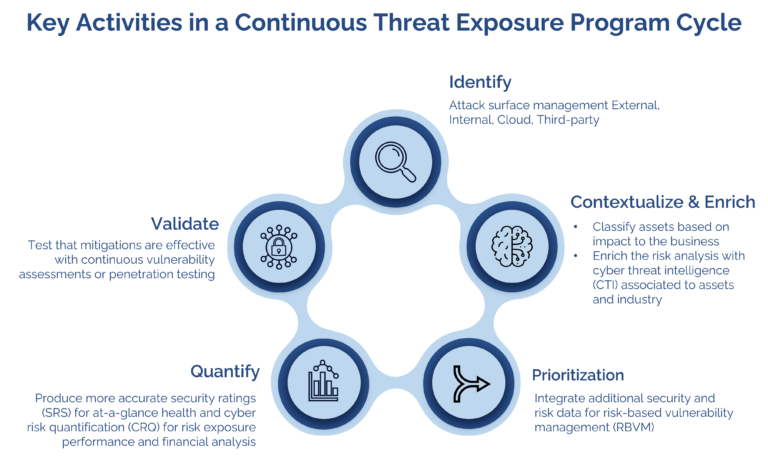
Continuous Threat Exposure Management – The 6 Aspects You’ll Need to Address Continuous Threat Exposure Management (CTEM) is an…
"This is an excellent starting point for any organization that wants to get serious about their cyber risk management. The system has the capability to grow as you become more sophisticated in your use"
IT Director
Services Industry
Security ratings are a resourceful metric that provides a gauge on the external cybersecurity posture of organizations and has become a data point that is important in today’s digital landscape, as businesses strive to protect their sensitive data and assets from cyberattacks. One of the original providers of security rating services is SecurityScorecard, which offers a platform for assessing and improving an organization’s cybersecurity posture for both enterprise risk and third-party risk management use cases. But how exactly does it work?
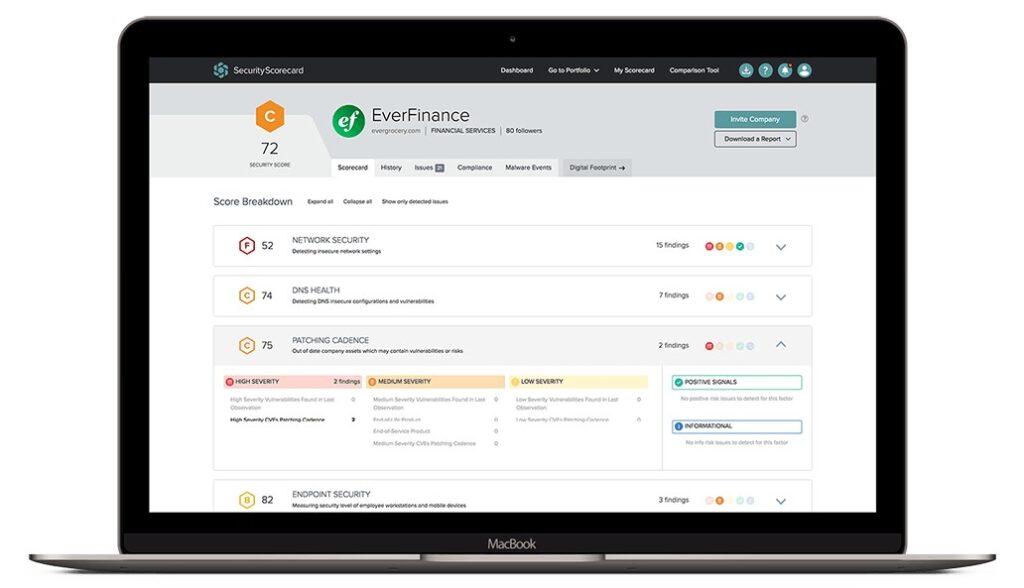
SecurityScorecard Dashboard UI, source: securityscorecard.com
The platform utilizes a combination of external and proprietary data sources, continuously monitoring a myriad of risk factors. The platform collects data from a variety of sources, including public records, vulnerability scans, threat intelligence and breach history ensuring an external view of an organization’s cybersecurity posture made available to clients and organization’s assessing companies as vendors. SecurityScorecard then analyzes this data to generate a security rating for the enterprise or each vendor organization being evaluated.
SecurityScorecard gathers data from a variety of sources, including:
Additional Resources
Cybersecurity rating scale explained
What are security ratings used for?
How are security ratings created?
What is a good cybersecurity rating?
How do you improve your security rating?
Is it easy to switch security ratings providers?
Why is my security rating wrong?
What Kind of Company is BitSight?
What is the Highest Security Rating?
Select What are the 5 C’s of Cybersecurity?
What is the difference between SecurityScorecard and BitSight?
What is the difference between BitSight and RiskIQ?
What is the difference between SecurityScorecard and CyberGRX?
The Evolution of Cybersecurity Ratings and How They Can Boost Risk Visibility

SecurityScorecard gathers data from external sources but emphasizes publicly accessible information, focusing on factors like DNS health and patching cadence. SecurityScorecard can also directly scan organizations to help reduce the misattributions of IT asset ownerships to organizations.
SecurityScorecard evaluates an organization’s cybersecurity posture across across ten groups of risk factors, including DNS health, IP reputation, web application security, network security, leaked information, hacker chatter, endpoint security, and patching cadence, as described on their website.
They take into account all the external-facing discoverable assets of an organization, the issues associated with those assets, and the severity of the threats that were found in order to determine a score for each organization. The scores are graded and measured along a cybersecurity risk rating scale in this case the SecurityScorecard scale is on an alpha scale of A-F.
Ultimately, whether or not SecurityScorecard is worth it for an organization depends on its specific needs, challenges and budget. Other things to consider are the methodologies used to derive the security rating, dispute process for any misattributions or false positives and their customer support experience. There are publicly available references that also discuss ‘Is SecurityScorecard worth it?’ that can be found Reddit SecurityScorecard forums, Gartner Peer Insights, G2 reviews and so on.
SecurityScorecard offers a number of benefits for organizations, including:
However, there are also some potential drawbacks to using SecurityScorecard, such as:
As businesses weigh their options in cybersecurity threat assessment tools and security ratings providers, evaluating the competition is crucial. Several SecurityScorecard competitors compete in the market, offering alternative solutions. Understanding the strengths and weaknesses of SecurityScorecard compared to SecurityScorecard competitors is essential for making an informed decision.
SecurityScorecard competitors include:
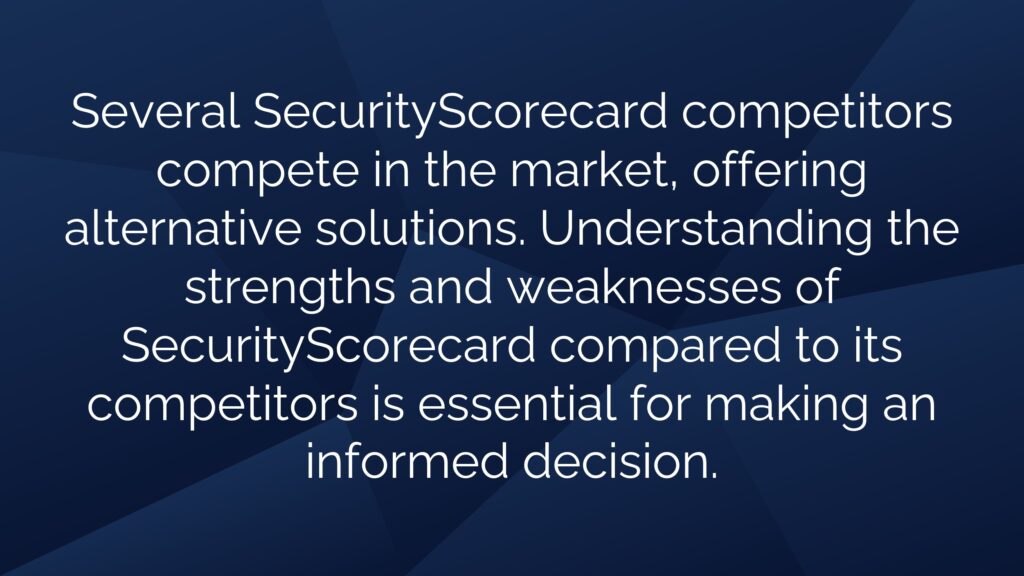
FortifyData is an alternative to SecurityScorecard and other security ratings providers that provides a more trusted and accurate security rating, according to clients. FortifyData is an automated threat assessment platform that produces a security rating that results from conducting threat exposure analysis and more comprehensive vulnerability assessments.
The FortifyData security rating is based on weekly direct and comprehensive, but non-intrusive, assessments of external IT assets which are confirmed by the client. Read more about how we calculate security ratings in our publicly available security rating methodology.
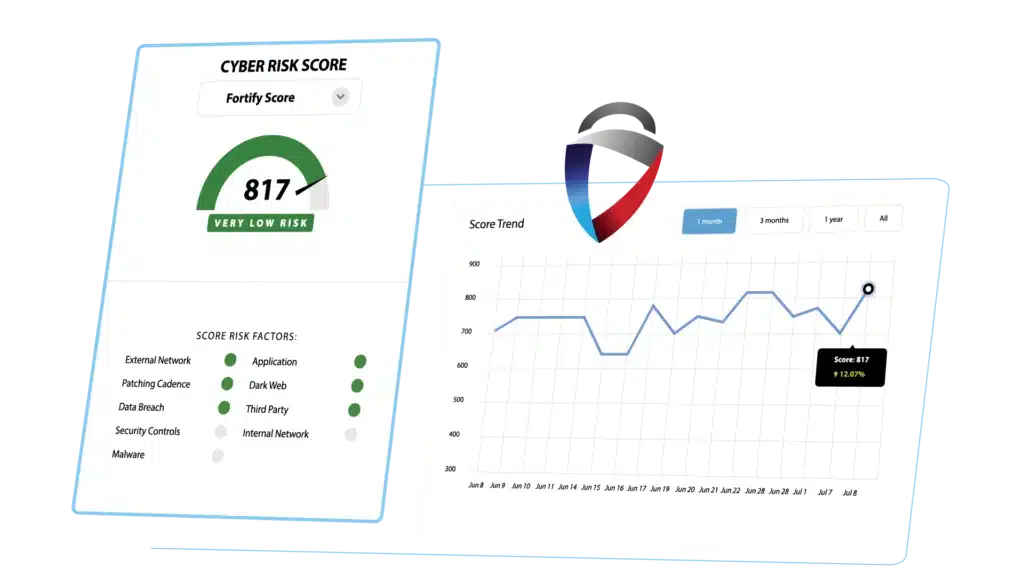
What other security ratings vendors don’t provide but FortifyData does, is the ability to classify the identified assets based on business impact and allows for likelihood of risk scenario adjustments to produce a contextualized security rating. This same approach is conducted for enterprise risk management and third-party risk management.
Additionally, FortifyData provides the option to also conduct internal risk assessments to add to the cyber security rating, so you truly get a comprehensive security rating based on external and internal information.
This alternative security ratings approach results in a more accurate and up-to-date security rating that FortifyData clients say is more trusted.
The accuracy of the SecurityScorecard rating is a complex issue. The SecurityScorecard rating uses a proprietary algorithm to generate its security rating, and the company does not disclose all of the factors that are considered. However, SecurityScorecard security rating services has been independently validated by a number of third-party organizations, and its ratings have been found to be useful.
The accuracy of a security rating services system is a critical consideration for businesses. SecurityScorecard employs advanced algorithms and continuously updates its data to provide an accurate reflection of an organization’s security posture. However, like any system, it has its limitations. Exploring the nuances of SecurityScorecard’s rating system allows organizations to grasp the precision and reliability of the scores provided.
The security rating from SecurityScorecard, like many other security rating services providers, is produced by:
At the core of SecurityScorecard’s functionality is its reliance on a range of risk and vulnerability data to provide their security rating services. These data points contribute valuable insights, ranging from network security to application security and breach history. SecurityScorecard collects data using a variety of methods, including:
SecurityScorecard is one of the original security rating providers that can help organizations to improve their cybersecurity posture. However, it is important to understand the limitations of the platform and to use it in conjunction with other security measures.
In conclusion, this article aims to demystify the question, “How does SecurityScorecard work?” By examining its data collection methods, assessing its worth in comparison to competitors, gauging the accuracy of its ratings, and understanding the collaboration with security rating services, businesses can make informed decisions about integrating SecurityScorecard into their cybersecurity arsenal.

FortifyData provides a trusted and accurate security rating based on weekly external attack surface assessments of your confirmed IT asset inventory. We take into account asset classification, likelihood adjustments and compensating controls and enrich the findings with dark web discoveries and cyber threat intelligence to give you a contextualized security rating.
FortifyData is an industry-leading automated cybersecurity risk management platform that enables the enterprise to manage cyber risk across the organization. By combining automated attack surface assessments with asset classification, risk-based vulnerability management, security ratings and third-party risk management, you get an all-in-one cyber risk management platform.

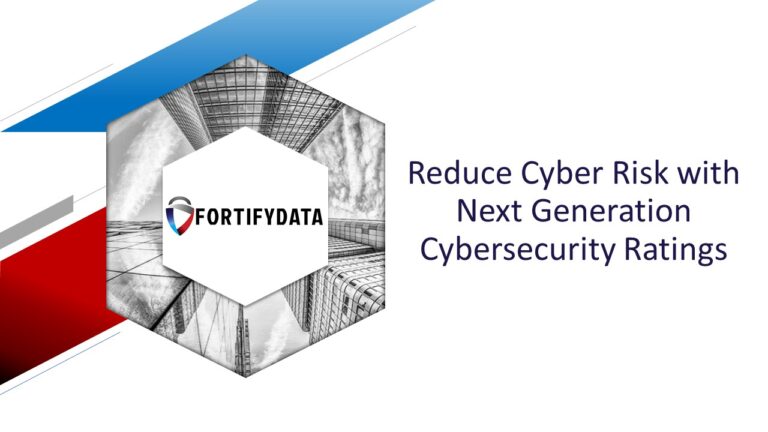
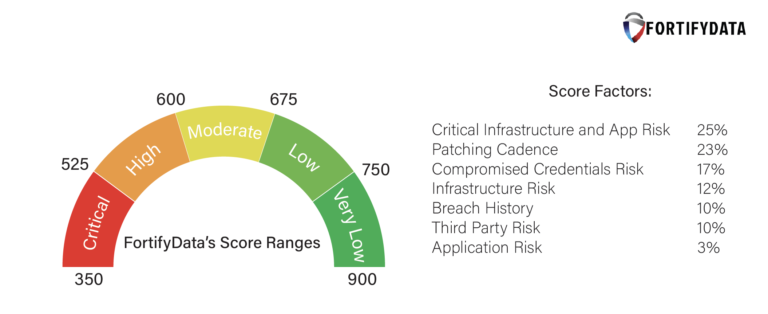
| Cookie | Duration | Description |
|---|---|---|
| cookielawinfo-checkbox-analytics | 11 months | This cookie is set by GDPR Cookie Consent plugin. The cookie is used to store the user consent for the cookies in the category "Analytics". |
| cookielawinfo-checkbox-functional | 11 months | The cookie is set by GDPR cookie consent to record the user consent for the cookies in the category "Functional". |
| cookielawinfo-checkbox-necessary | 11 months | This cookie is set by GDPR Cookie Consent plugin. The cookies is used to store the user consent for the cookies in the category "Necessary". |
| cookielawinfo-checkbox-others | 11 months | This cookie is set by GDPR Cookie Consent plugin. The cookie is used to store the user consent for the cookies in the category "Other. |
| cookielawinfo-checkbox-performance | 11 months | This cookie is set by GDPR Cookie Consent plugin. The cookie is used to store the user consent for the cookies in the category "Performance". |
| viewed_cookie_policy | 11 months | The cookie is set by the GDPR Cookie Consent plugin and is used to store whether or not user has consented to the use of cookies. It does not store any personal data. |